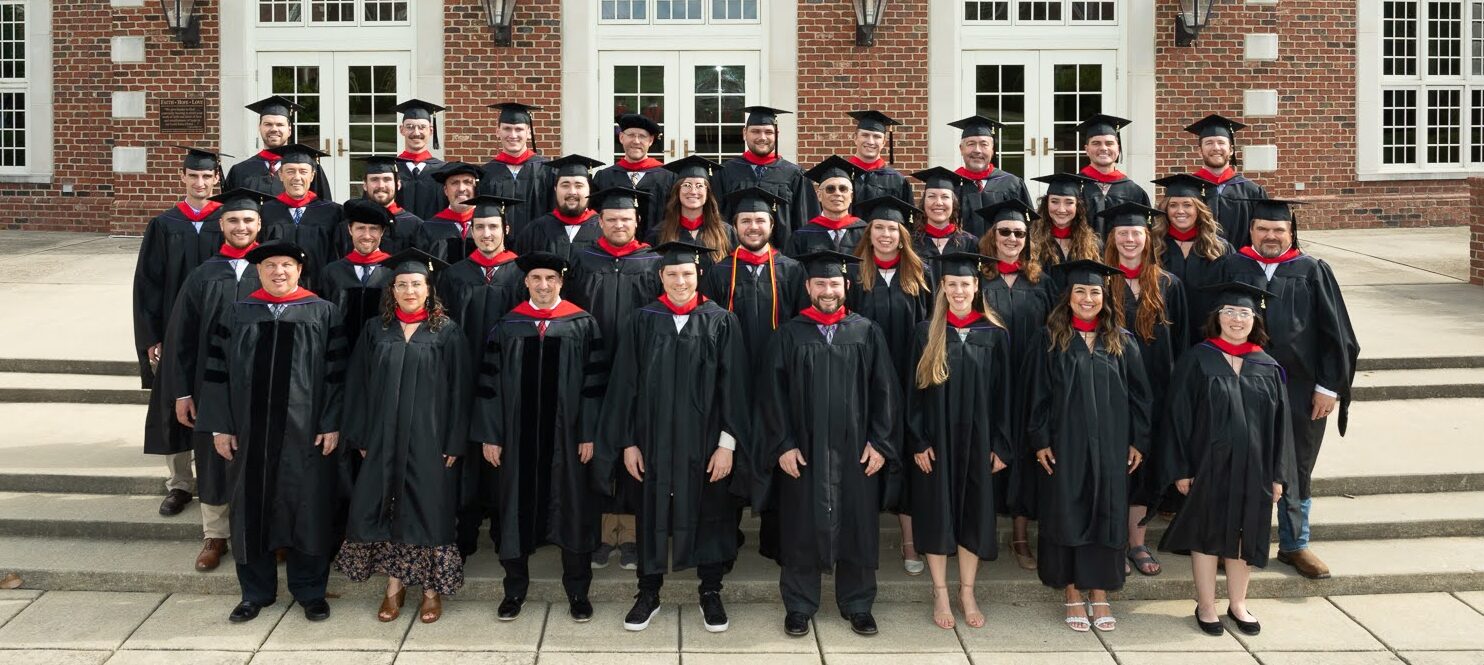EDITOR’S NOTE: The following is an excerpt from Michael Vlach’s new book, The New Creation Model: A Paradigm for Discovering God’s Restoration Purposes from Creation to New Creation (Theological Studies Press, 2023)
The New Creation Model is a paradigm and perspective for viewing God’s multi-dimensional purposes from Genesis 1 through Revelation 22. In short, this model accounts for all God’s creation purposes and the vibrant nature of eternal life. The original “very good” creation of Genesis 1, that suffered from the Fall of man in Genesis 3, is headed for restoration and the new creation situation of Revelation 20–22. As Christians we need to grasp all God is doing. Below we discuss several important areas the New Creation Model addresses.
The Nature of Reality
Genesis 1–2 reveals a vast, spectacular creation involving cosmic bodies (sun, moon, stars), the earth, seas, animal kingdom, vegetation, sky, planets, humans, etc. God’s plans also include culture (see Genesis 4) and various nations and ethnicities (see Genesis 10–11). Colossians 1:16 states that through Jesus “all things were created, both in the heavens and on earth, visible and invisible.” Thus, creation is multi-dimensional, involving spiritual matters and material things. There is no cosmic dualism between spirit and matter. As Alva McClain states, “there is no unbridgeable chasm between that which is physical and that which is spiritual.”[1]
Understanding this must impact our worldview. In short, the New Creation Model accounts for all dimensions of God’s creation and new creation purposes—material and immaterial. The “restoration of all things” God is pursuing in Jesus (see Acts 3:21; Col. 1:20) concerns the entire array of creation realities.
Also, while man is the high point of God’s creation the creation has value in itself and is more than just the background of salvation history. As Snyder states, “Creation has intrinsic value, not just instrumental value.”[2] God desires the creation to thrive for His glory and He has tasked man with responsibly governing it. Thus, a major part of the New Creation Model involves grasping the full array of God’s creation realities. These are part of God’s purposes before sin arrives in Genesis 3, and they will be part of God’s purposes after all effects of sin and death are vanquished (see Revelation 21–22).
The Nature of Eternal Life
The New Creation Model also addresses the nature of eternal life. Eternal life entails resurrected bodily existence for God’s people on a tangible, restored earth where the saints will enjoy the direct presence of God, interact with others, and experience cultural and social activities. As Blaising explains:
The new creation model of eternal life draws on biblical texts that speak of a future everlasting kingdom, of a new earth and the renewal of life on it, of bodily resurrection (especially of the physical nature of Christ’s resurrection body), of social and even political concourse among the redeemed.[3]
This model follows the language of passages like Isaiah 25; 65; 66; Romans 8; and Revelation 21 which speak of a regenerated and transformed earth.[4]
The New Creation Model affirms that the greatest part of eternal life is seeing God and being in His presence. So, there is a real “vision of God” or Beatific Vision. Yet, this experience, by God’s design, involves a restored earth with relationships, activities, and social-political-cultural interactions. Relationships are key to the Eternal Kingdom—with God and others—but these relationships will occur in the context of a beautiful, restored creation.
The New Creation Model also accounts for ethnic and national diversity among God’s people. This includes the nation Israel, Gentile nations, and the lands Israel and the nations live on. God’s people, or even better—“peoples” (see Isa. 25:6), is more than a generic collection of individuals with no diversity. God’s people do not become a generic humanity. Ethnic and national diversity will be part of the new earth conditions. God brings glory to himself through both unity and diversity. The redeemed are all saved the same way in Jesus—unity. Yet there are distinctions in ethnicity and nationhood—diversity. These distinctions are beautiful and harmonize with the unity all believers have in Christ (see Eph. 2:11–3:6). So salvation and restoration involve unity and diversity in perfect harmony.
Continuity with Present Experiences
World religions often present a great difference between our current experiences on earth and our coming experiences in eternity. Hinduism and Buddhism, for instance, offer an impersonal eschatology in which the ultimate goal for man is to merge into an impersonal absolute where no self-consciousness or anything tangible exists. A person will be like a drop of water dropped into a vast ocean of mystical, impersonal reality. Surprisingly, Christian traditions, too, often have presented Heaven as a purely spiritual existence—the soul dazzled by light in an immaterial realm forever.
But that is not the picture the Bible presents. The New Creation Model asserts that eternal life is dynamic, colorful, tangible, and relational. It affirms real experiences and activities like those in the present world. The main difference is that sin, the curse, and death do not taint these coming real-world experiences. As Blaising notes, “The new creation model expects that the ontological order and scope of eternal life is essentially continuous with that of present earthly life except for the absence of sin and death.”[v] Thus, eternal life is not spirits floating in an immaterial realm. That is not how God created man to be and function. Instead, it is more accurate to think of eternal life in terms of healthy social, cultural, and relational activities in the context of love and righteousness with no taint of anything negative.
This continuity of experience involves space and time. Steven James notes, “the new creation model emphasizes an earthly, material, time-sequenced and embodied existence in a new heavens and new earth.”[6] He also says, “Redemption as a biblical theme certainly includes the spiritual realm but it also includes the physical realm, specifically the promise of a new heaven and a new earth.”[7]
In sum, the New Creation Model affirms the following:
- The goodness of all God’s creation—spiritual and material
- A coming new earth
- Renewal of life on the new earth/redeemed creation
- Bodily resurrection/embodied existence
- Social, cultural, and political discourse among God’s people
- Experiences on the new earth similar to the present earth but without sin, decay and death
- Holistic anthropology (humanity)
- Time-sequenced history
More than Individual Salvation
Nothing is more urgent for a person than repenting and trusting in Jesus for salvation. Personal godliness and Christian living also are important. This involves the spiritual disciplines of prayer, self-denial, and Bible study. A New Creation Model approach affirms the importance of all this. Yet a new creationist perspective also addresses God’s “big-picture” purposes beyond individual human salvation and daily Christian living. It detects what God is doing in history with the earth, nations, Israel, the Day of the Lord, and the kingdom of God. When it comes to God’s purposes we are dealing with a “both/and” situation. We can focus on our own personal relationship with God and grasp what God is doing at a big-picture level.
Michael Williams notes that the influential theologian, Augustine (AD 354–430), taught “verticalism,” which is a view of the future solely focused on the soul going to Heaven.[8] Steven James claims that such a heavy focus on the individual often has led to a “devaluing” of other aspects of God’s creation that has “dominated the history of the church”:
According to Snyder, the tendency to focus solely on individual sin and salvation and the tendency toward dualism have led to the devaluing of the non-human creation. These tendencies have dominated the history of the church and made predominant the view that has made the salvation of souls not merely the center of God’s redemption plan, but the circumference of that plan.[9]
A New Creation Model perspective, though, is creation and kingdom-oriented. It includes serious contemplation of individual human salvation and the whole scope of God’s creation. Noting the work of Donald Gowan, James observes that “there is promised a threefold transformation of creation—that of the human person, human society, and nature.”[10] Thus, the transformation of creation involves:
- The Human person
- Human society (social, cultural, political structures)
- Nature (creation, land, sea, vegetation, animals, birds, fish, aquatic creatures, etc.)
A New Creation Model approach affirms the importance of all three areas, not just the first. As Snyder states, “. . . Jesus is the renewer of the whole creation, the whole face of the earth, and all the dimensions of life. Salvation is that big.”[11]
Jesus’ Roles
Theologians have rightly noted that Jesus fulfills the roles of Prophet, Priest, and King. He is the ultimate Prophet, the One greater than Moses, who reveals God’s perfect will. Jesus also is the Priest who offered one perfect sacrifice for sins forever. He continually intercedes for us in Heaven. Jesus, too, is King. We will discuss what this means in more depth below.
The Bible particularly emphasizes Jesus’ roles as Savior and King. Jesus as Savior emphasizes Jesus’ sacrificial atonement for sin. He came “to give His life as a ransom for many” (Mark 10:45). His Savior role means man can be forgiven and reconciled to God.
Jesus’ role as King needs explanation because this dimension of Jesus’ role often has been understated in church history. With the dominance of Amillennialism since the late fourth century onward, Jesus’ role as King in His messianic/kingdom often has been understood in a spiritual way. Jesus is King over a spiritual kingdom. Jesus’ kingdom mostly involves salvation from sin.
Yet while there is a spiritual dimension to Jesus’ kingdom, Jesus’ role as King is much deeper than individual salvation from sin, as important as that it. This is where the New Creation Model grasps the multiple dimensions of “Jesus as King.”
Jesus’ role as King also includes being (1) Ruler over geo-political nations; and (2) Restorer of all creation. Concerning Jesus as Ruler over nations, God promised the Messiah the nations as His inheritance (Ps. 2:8; He also said the Messiah will rule the nations with a rod of iron (Ps. 2:9; cf. Rev. 19:15). Zechariah 14 states that the Messiah (Jesus) will be “King over all the earth” (14:9) and the nations, including Egypt, must obey Him or experience negative consequences (14:16–19). In Daniel 2, the kingdom of God, the “stone made without hands,” comes to earth and smashes the geo-political nations represented in the statue (Babylon, Medo-Persia, Greece, Rome).
Importantly, Jesus’ reign as King must not be restricted to only spiritual salvation or saving individuals from nations. Jesus also will function as King over geo-political nations over the lands they live in with a political rule that encompasses the entire earth (see Isa. 2:2–4; Zech. 9:10).
Jesus’ role as King also means He is Restorer of creation. He will restore the earth and its creatures and bring harmony to all nature. This role is emphasized in passages like Isaiah 11; Hosea 2:18; and Romans 8:19–22. The intertextual connection of Hosea 2:18 with Genesis 1:26, 28 reveals that the Messiah will restore the animal realm that suffered from the Fall in Genesis 3. This results in animal-animal harmony and animal-human peace. He also brings agricultural prosperity to the earth (see Gen. 49:8–12; Ps. 72:16).
Thus, a New Creation Model view affirms the depth of Jesus’ role as King, including the functions of ruling nations and restoring creation.
Jesus’ Atonement and the New Creation
Jesus’ atonement on the cross is central for the restoration and reconciliation of all things. Without it there is no salvation of persons or restoration of anything. Jesus came to give His life as a ransom for many (see Mark 10:45). He reconciles people to God with His death (see Col. 1:22). He also died for both Gentiles and Israel (see Isaiah 52–53). Thus, dying for the sins of humans is a central part of Jesus’ death and atonement. Also, Jesus’ atonement affects the whole person, including the body. In reference to Jesus and what His death means for resurrected saints, Richard Baxter declared, “As Christ bought the whole man, so shall the whole partake of the everlasting benefits of the purchase.”[12]
Yet in addition to atonement for human sin and the whole person, the cross has implications for all creation. Colossians 1:15–20 teaches the reconciliation of “all things” in Christ “through the blood of His cross” (v. 20). This refers to everything God created, including all things visible and invisible (Col. 1:16). Jesus’ atonement reconciles and restores both people and creation.[13] Thus, a New Creation Model approach calls for accepting all dimensions and implications of Jesus’ atonement. As Steven James notes, “the work of Christ includes not only the salvation of the individual, but also the redemption of the entire creation from the effects of sin.”[14] Howard Snyder aptly explains the cosmic aspects of Jesus’ reconciliation:
The reconciliation won by Christ reaches to all the alienations that result from our sin—alienation from God, from ourselves, between persons, and between us and our physical environment. The biblical picture therefore is at once personal, ecological, and cosmic. As mind-boggling as the thought is, Scripture teaches that this reconciliation even includes the redemption of the physical universe from the effects of sin as everything is brought under its proper headship in Jesus (Rom. 8:19–21).[15]
That all creation, which suffered from the fall, would be transformed by the salvation Christ brings makes sense on a symmetrical level. As Saucy observes, “If we regard the negative affects of the fall of mankind as materially evident, then it is perfectly sound to regard the positive transformation wrought by messianic salvation as empirical as well.”[16]
The resurrection of Jesus also relates to the earth. The resurrected Jesus walked on the earth, held conversations on the earth. He even ate meals. This seems to have implications for the coming new earth: “If Jesus’ body was recognizably the same after his resurrection, so also the earth will be recognizably the same after its renewal. To the degree that Jesus’ resurrected body was and is physical, so also will be the earth and our bodies.”[17]
The New Creation Model asks us to consider everything the cross of Jesus accomplishes. God is pursuing the “restoration of all things” in Jesus (see Acts 3:21) and this involves creation.
Spiritual Realities and the New Creation Model
Some think a New Creation Model perspective is too focused on material things and is not spiritual enough.[18] But the New Creation Model is not opposed to spiritual realities. It affirms them and their importance. This model does not demote spiritual matters to a secondary status. God is spirit. Man has a spirit. Loving of God and loving people are the two greatest commands and the two most important things a person can do. The kingdom of God involves justice, righteousness, peace, joy, and love. Yet these “spiritual” realities exist alongside material realities. Passages like Isaiah 11 and Psalm 72 reveal that Messiah’s kingdom will be an earthly kingdom that is characterized by the spiritual qualities of justice, fairness, and righteousness. A New Creation approach asks that both material and spiritual aspects of God’s purposes be properly considered. And material and national entities should not be spiritualized.
While the Spiritual Vision Model presents a cosmic dualism between spirit and matter by elevating the former and denigrating the latter, the New Creation Model has no such dualism. It affirms the importance of both the spiritual and the physical.
The New Creation Model and Sin
The New Creation Model focuses on positive issues such as God’s creation purposes and the vibrant, multi-dimensional nature of eternal life. Yet this model also addresses the impact of sin on every level. Sin is a spiritual issue, but it also is anti-creational. It affects all creation. No aspect of creation is left untouched by sin. We should consider the multi-dimensional nature of sin so that the multi-faceted nature of salvation and restoration in Christ can be appreciated.
First, and most importantly, sin is an offense against God. God is worthy of worship and obedience from man, but man does not do this. Man is under the wrath of a holy God who cannot tolerate sin and sinners. Sin, therefore, is an offense against God—“Against You, You only, have I sinned” (Ps. 51:4).
Second, sin brings devastating turmoil to the individual human person. Adam’s sin brought guilt, shame, and fear to himself. The same is true for all of Adam’s descendants. The inner anguish for people, including depression, in a fallen world is great. This is evident by the many addictions, destructive behaviors, and suicides in our society. Sin wreaks havoc internally on the sinner.
Sin also impacts the two genders specifically. For men, sin brings frustration in the realm of work, including thorns and thistles to frustrate him. In the realm where man was to rule and subdue, he will be frustrated. Sin also brings increased pain in childbirth for the woman. Sin brings devastation to all people, and it affects men and women in their respective roles.
Third, at the community level, sin introduced tension and hatred amongst people. Cain’s murder of Abel is one early example. Sin affects nations and ethnicities through constant wars, hatred, genocide, and persecution. The political, societal, and cultural realms are also polluted with sin. Thus, sin devastates man at the community and societal levels. God instituted government to regulate evil in society (see Romans 13), but in a fallen world sin occurs on a community and societal level.
Fourth, sin affects creation. Earth and land also are affected by sin. “Cursed is the ground because of you” (Gen. 3:17). As Snyder observes, “The land suffers from human sin in three ways: it suffers directly from human ill treatment of the land; indirectly it suffers the consequences of human violence; finally, it languishes from the lack of proper stewardship care that was entrusted to humankind.”[19] The animal kingdom also suffers in a fallen world.
Extent of Jesus’ Salvation
The bad news from sin is extensive but so too is the solution. Salvation in Jesus is multi-faceted. Jesus reverses, restores, and heals all the negative effects of sin at every level.
First, salvation in Jesus means reconciliation and restored relationship with God for the individual person.
Second, salvation in Jesus replaces the inner turmoil of guilt, shame, and fear with joy and peace.
Third, Jesus brings healing to human relationships. Christians are now able to love their neighbor as they should.
And fourth, Jesus will bring healing and peace to all creation including the earth, land, and all creatures.
In every area where sin mars and destroys, Jesus fixes and renews—“I am making all things new” (Rev. 21:5). Through His two comings, Jesus forgives sins and reconciles man to God. Jesus replaces hate with love so His people can love their neighbor. Yet, the benefits of salvation continue even further. Jesus will wipe out all disease and resurrect the body. He will reverse the curse on the ground and bring restoration to the entire creation, including the animal kingdom (see Hos. 2:18; Romans 8; Isaiah 11). He will bring healing to the nations and people groups of the world (see Rev. 5:9). He restores society and culture. Snyder is right that, “The reconciliation won by Christ reaches to all the alienations that result from our sin—alienation from God, from ourselves, between persons, and between us and our physical environment. The biblical picture therefore is at once personal, ecological, and cosmic.”[20] Thus, the New Creation Model relates to sin in that sin affects man and creation holistically, but the restoration Jesus brings is holistic as well.
Individuals, Nations, and Israel
While a Spiritual Vision Model perspective focuses exclusively on the salvation of individuals or the elect, a new creationist perspective affirms the importance of individuals, Israel, and all ethnicities and nations in God’s plans. First, God saves individuals (Matt. 11:28–29). Second, He uses the nation Israel as a vehicle for His plans (Gen. 12:2; Rom. 11:12). And third, God works with nations and ethnicities. God will bless all people groups and nations (Gen. 12:3; 22:18; Rev. 5:9). Isaiah 19:16–25 promises that in the coming kingdom the nations of Egypt, Assyria, and Israel will exist and function harmoniously as geo-political entities. Revelation 21:24, 26 tells of multiple nations and kings bringing their glory into the New Jerusalem. The gospel is going to all nations in this present age, but a future era is coming when national entities will serve the Lord (see Isa. 2:2–4).
McDermott notes that, “We all will be renewed, both as individuals and as nations.”[21] Why is this issue so important to get right? It is because “Today’s theologies . . . tend to accent the individual at the expense of the social.” And “ethnic, national, and linguistic identities have been erased from most Christian portrayals of the world to come. . . .”[22] But a New Creation Model approach captures the richness and dimensions of all people groups in God’s purposes.
Conclusion
As these categories show, God’s purposes are multi-dimensional involving many areas. A New Creation Model approach helps the Christian grasp the many wonderful things God is accomplishing through Jesus.
END NOTES
[1] Alva J. McClain, The Greatness of the Kingdom: An Inductive Study of the Kingdom of God (Winona Lake, IN: BMH Books, 1959, 1987), 523.
[2] Howard A. Snyder with Joel Scandrett, Salvation Means Creation Healed: The Ecology of Sin and Grace: Overcoming the Divorce Between Earth and Heaven (Eugene, OR: Cascade, 2011), 61.
[3] Craig A. Blaising, “Premillennialism,” in Three Views of the Millennium and Beyond: Three Views, ed. Darrell L. Bock (Grand Rapids: Zondervan, 1999), 162. Emphases in original.
[4] Other relevant passages include Genesis 49:8–12; Isaiah 2; 11; Ezekiel 36–37; Micah 4; Amos 9:11–15, Matthew 19:28–30, etc.
[5] Blaising, “Premillennialism,” 162.
[6] Steven James, New Creation Eschatology and the Land: A Survey of Contemporary Perspectives (Eugene, OR: Wipf and Stock, 2017), 1.
[7] Ibid., 12.
[8] Michael Williams, “A Restorational Alternative to Augustinian Verticalist Eschatology,” Pro Rege 20 (1992): 11.
[9] James, 11–12. See Snyder, Salvation Means Creation Healed, 99.
[10] James, xv.
[11] Snyder, 129.
[12] Richard Baxter, The Saint’s Everlasting Rest, (Glasgow: Khull, Blackie, & Co. 1822), 11.
[13] This does not mean the salvation of all people.
[14] James, 3.
[15] Snyder, 99.
[16] Robert L. Saucy, The Case for Progressive Dispensationalism: The Interface between Dispensational and Non-Dispensational Theology (Grand Rapids: Zondervan, 1993), 237.
[17] Snyder, 107.
[18] See Michael Allen, Grounded in Heaven: Recentering Christian Hope and Life in God (Grand Rapids: Eerdmans, 2018).
[19] Snyder, 76.
[20] Snyder, 99.
[21] Gerald R. McDermott, Israel Matters: Why Christians Must Think Differently about the People and the Land (Grand Rapids: Brazos Press, 2017), 116.
[22] Ibid., 115.







